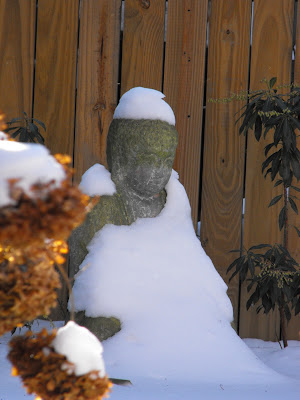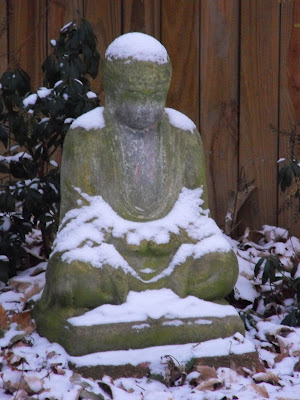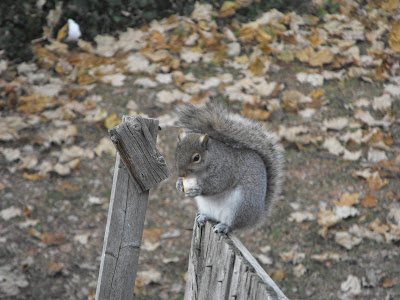Confession—not in the strict Catholic sense—must be one of those universal pleasures to expiate our souls of the guilt and angst we feel for lying, cheating, thieving, scheming, or whatever else compels us to tell another of what a human being we are. {Notice I did not write “what kind of human being we are,” or “how bad of a human being we are,” or any variation thereof. I assume none of us are bodhisattvas; we just are…and hence we need to confess every now and then…}
And so, as 2010 (for many an Annus horribilis) comes to an end and as 2011 appears on the horizon (invariably all hope the new year will be an Annus mirabilis), I offer my own confession.
I covet. I desire. I yearn. I’ve even scouted, encountered, and, dare I admit this publicly, touched. That touch is poison: for it has the effect of underscoring the negative s of that which we have, of those in our presence. Newness attracts. And so we desire and covet more. Yes. I am naughty: very, very naughty indeed.
Now, perhaps my dear reader will think I should first share this confession of naughty doings with Viet, especially since touching was involved, but what good is a confession if it is shared only with one?! Spread the pleasure, I declare with aplomb!
I want more, and so began looking around. At the risk of sounding superficial, I admit that either the object of my affections offered interior depth and beauty but (let me be civil about this) was not blessed in the exterior department, or the exterior attracted but the interior was rather vacant and banal.
Conventional wisdom may dictate that “looking around” is a sign of unhappiness and lack of fulfillment, and there is much truth to that as conventional wisdom goes. But I am convinced that “looking around” is also symptomatic of deeper maladies: impatience and an inability or lack of will to fully engage the beloved and the self. And these things may be traced back to desire. Desire is, as the Buddhists tell us, the root of all suffering. And suffer do I!
First, let me venture this thought: “shame on me!”
Second, I do not deserve the honorific of “gardener,” for my desires relate precisely for more garden space. I sense that I have outgrown that which I have created here at 410. I yearn for an all black flower bed, perhaps mixed with a bit of silver or deep purple. I yearn for an all white garden room, and a bed of fiery red, a full shade fern garden and a woodland walk. People remark of my gardens, “oh, this must take a long time to care for.” And I respond: “creating it took a long time; caring for it is relatively easy. In fact, I can handle more.”
So I began to look: house-hunting on the internet, until one day I went to look at one of the “grand ladies” around the corner on Baynard Blvd.: its interior was magnificent, but its exterior spaces were miniscule. I would be down-sizing my garden, which is exactly what I do not want to do.
Such has been my plight over the last few months…fantasizing about other properties. Shame. I won’t be surprised if Priapus, a minor Greek god of gardens (and another unmentionable) punishes me by killing off my beloved Corydalis flexuousa (Purple Leaf or Blue Corydalis), or some other plants in my garden.
 Gardening, I have quickly come to realize (despite my months of weakness coveting more), is a long term commitment to cultivation and care. Thoughtful gardeners, Robin Lane Fox would admonish, learn over time the needs of particular plants, and set such plants in a lengthy conversation with one another. The gardener listens to those conversations and adds to and subtracts from them in the long term. I have planted a garden (and frequently amend) and owe this garden my compassion and acre in the long term. I owe myself (and my plants) not simply this initial investment of energy but allegiance over time to watch it grow, to see the Climbing Hydrangea conquer more of the fence as I weave its tendrils between the deck balusters; to witness the filling in of the East Side Shade Bed which I vowed to renovate (and which I have been renovating); to enjoy the fruits of the mid-level “wall” I constructed out of Shenandoah Switch Grass and Firepower Nandina to set off the stone patio. In fact, there is much more to be done, much more to change, much room to plant, much more to enjoy.
Gardening, I have quickly come to realize (despite my months of weakness coveting more), is a long term commitment to cultivation and care. Thoughtful gardeners, Robin Lane Fox would admonish, learn over time the needs of particular plants, and set such plants in a lengthy conversation with one another. The gardener listens to those conversations and adds to and subtracts from them in the long term. I have planted a garden (and frequently amend) and owe this garden my compassion and acre in the long term. I owe myself (and my plants) not simply this initial investment of energy but allegiance over time to watch it grow, to see the Climbing Hydrangea conquer more of the fence as I weave its tendrils between the deck balusters; to witness the filling in of the East Side Shade Bed which I vowed to renovate (and which I have been renovating); to enjoy the fruits of the mid-level “wall” I constructed out of Shenandoah Switch Grass and Firepower Nandina to set off the stone patio. In fact, there is much more to be done, much more to change, much room to plant, much more to enjoy.The joy of gardening comes not simply or even primarily from planting/creating a garden. The joy comes from the work of gardening—the care, the cultivation, and yes, the weeding and the pruning, the additions and the subtractions, the raking and the composting, and the multitude of creative ways we small space gardeners can get more with less.
So, dear reader, you have my confession, but I offer my own remedy, a sort of New Year’s resolution that may be easier to keep than all those others. I will pursue the joy of gardening with vigor and renewed meaning and conviction, passion and devotion, to all those plants that exist outside and in spite of me. I will love the gardens at 410, and all that reside within it.
A Happy, Plantastic New Year to all!






















